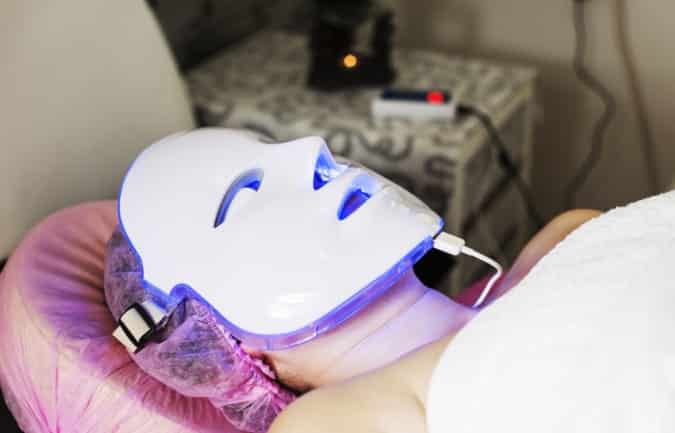Photodynamic therapy is a treatment typically used in the treatment of acne, warts, and a range of cancers, including mouth (oral), head and neck, lung, and skin cancer, and has been for a number of years now.
However, PDT is now being considered a novel approach to eradicating the human papillomavirus.
This follows a study conducted by scientists at the Mexico National Polytechnic Institute who found it to be effective in clearing the virus.
Furthermore, it was reported that a researcher who worked on the project, Eva Ramón Gallegos, has used the method to remove HPV from 100% of a 29-women sample.
So is PDT the cure for HPV that we’ve all been looking for?
That remains to be seen.
The latest reports are yet to be published in a peer-reviewed journal, and they were made a considerable amount of time ago now, back in February 2019.
Nevertheless, PDT is worth exploring in the eradication of a virus which is the leading cause of cervical cancer in the world, and one of the most commonly transmitted sexual infections in the world.
How Does PDT Work?
PDT involves using a particular type of light in combination with a photosensitizing agent called aminolevulinic acid (ALA), which is applied as either a topical cream or injected into your blood to make your cells sensitive to light.
Aminolevulinic acid, particularly 5-aminolevulinic acid, is an amino acid that is involved in a pathway called porphyrin synthesis in your body.
When combined with the correct light wavelength, the procedure damages those surface layer cells affected by HPV, while surrounding tissue is left undamaged.

In other words, ALA, makes your cells more sensitive to light, and when exposed to a certain wavelength of light, can kill cancer cells.
PDT also works well for treating genital warts. The combined therapy attacks the skin cells of genital warts that continue to expand when they shouldn’t. In addition, the therapy was specific enough that it targeted these cells but left the normal, healthy skin cells alone.
What Are The Benefits of PDT?
Many women who suffer from HPV are of child-bearing age, so the risk of treatment to future pregnancies is a concern for this population. Luckily, photodynamic therapy poses a lower risk to current and future pregnancies.

Among other benefits, photodynamic therapy is also non-surgical, which also means there is no blood loss, no sustained damage to cervical tissue, and no reports of infertility related to treatment.
Are There Any Downsides?
PDT can be associated with some side effects, such as red, itchy skin, swelling, burning, or stinging at the site of treatment, however, these are relatively minor problems, especially in comparison to some of the treatments mentioned above.
However, PDT can be expensive.
This is dependent on the length of treatment and resistance of HPV, however, studies show that it is more cost-effective in comparison to some other treatments.
How Effective Is PDT?
We did the digging so you wouldn’t have to. So sit back, sip your green tea, and relax.
Most clinical trials show that PDT is highly effective when compared to a placebo treatment, or a treatment where the study participants THINK they are getting PDT treatment, but in reality, they are not.
When targeting CIN or HPV infections specifically to each patient, the complete remission rate is improved significantly. Keep in mind, the studies in this review were of lower quality. Studies show that with ALA-PDT, HPV can be effectively eliminated in those with latent or subclinical infections within 3 months.
This is the population of people who have been diagnosed with HPV but have not or are not currently showing symptoms.
Catch it early, and ALA-PDT therapy may work for you!
Multiple 4-hour treatments of 5-ALA and PDT in males with genital warts show complete clinical remission after the last session. The number of sessions and strength of treatment was specified for each patient depending on HPV viral load, a number that dictates the severity of infection.
By monitoring the viral load, doctors were able to keep an eye on the effectiveness of treatment, knowing when they needed to increase the intensity, or back off with treatment.
Treatment effectiveness
According to the evidence, the percentage strength of the aminolevulinic acid may impact effectiveness.
Comparing 2 different studies, one clinical trial used a 20% aminolevulinic acid gel and showed a high complete response rate, meaning no more symptoms for the patients with HPVafter 3 treatments. Even after 1 year, follow-up tests showed very low levels of recurrence of symptoms in patients.
Another study of higher quality used a 3% aminolevulinic acid gel with photodynamic therapy. Their results were generally positive for use in the treatment of HPV symptoms, however, they were not significantly different from the placebo group (recall: study participants THINK they are getting PDT treatment, but in reality, they are not). This study was of higher quality, so perhaps the other study was not as accurate.
A third clinical trial from Mexico used a 6% aminolevulinic acid gel with photodynamic therapy. They were looking into eliminating HPV-16and HPV-18 and associated cervical intraepithelial neoplasia (CIN) in Mexican women. They found that at this percentage, HPV infections were successfully eliminated, with or without CIN progression.
Specifically, in groups of people with cervical intraepithelial neoplasia, PDT showed to be very promising. CIN precancerous lesions, including carcinomas and early invasive cancer of the cervix, responded very well to photodynamic therapy.
Improving HPV outcomes
Well, newer studies are showing the effectiveness of using different analyses and numbers to track and guide the effectiveness of treatment. Researchers and doctors are keeping tabs on the HPV viral load to measure the effectiveness of treatment. This helps the treatment team to know if the current treatment is working if the dose should be increased, or if the treatment is working so well that they can start to use lower doses.
PDT has been shown to significantly lower viral load after treatment. The better the treatment, the lower the viral load!
They can also keep track using polymerase chain reaction assays (PCR) to give a grade of HPV, measuring the status of the HPV infection. DNA detection with genotype identification has also been used in this patient setting. The only thing you really need to know about this technique is that it can help find some precancerous or HPV lesions that are unnoticed.
Using these techniques, one clinical trial saw two cases of anal warts cleared with no detectable HPV at the end of treatment or at 1 year after treatment.
Mechanisms of Action
- ALA-PDT also works by downregulating the expression of the human papilloma virus E6/E7 oncogene, the gene responsible for producing precancerous and cancer cells associated with HPV.
- It also upregulates tumor suppressors, including p53, something that’s usually produced in your body to prevent tumors from growing.
- ALA-PDT causes apoptosis of H8 cells, which is very important. H8 cells are HPV-16 immortalized cervical epithelial cells.
- These cells are highly studied in HPV, as they activate the E6/E7 oncogenes and otherwise hide in plain sight by acting and functioning as normal human skin cells. One study found that by downregulating the E6/E7 oncogene and upregulating tumor suppressor, they were able to cure HPV infection-associated diseases and prevent progression into cervical cancer. The higher the dose of treatment, the higher the level of cell death of H8 cells. That’s a win in our books!
In summary:
Current research on available clinical trials show that PDT combined with ALA is very effective in the treatment for HPV and associated conditions.
Infections of early or late stage, with or without CIN, and even infections progressed into cervical cancer are all potentially treatable by ALA-PDT. Trials are all new and of varying qualities, but the research available is all we have to determine the benefits of this new therapy.
What else can you do?
Lifestyle modifications, a healthy diet, and supplementation are key in maintaining a robust immune system to help clear the HPV infection. Even with the PDT, ensuring adequate wellness and a fully supported immune system will work in conjunction with the treatment to fight the battle against HPV!
Discover the innate benefits in each Papillex ingredient and what exactly it does to support your immune system so you stay HPV-symptom free!















